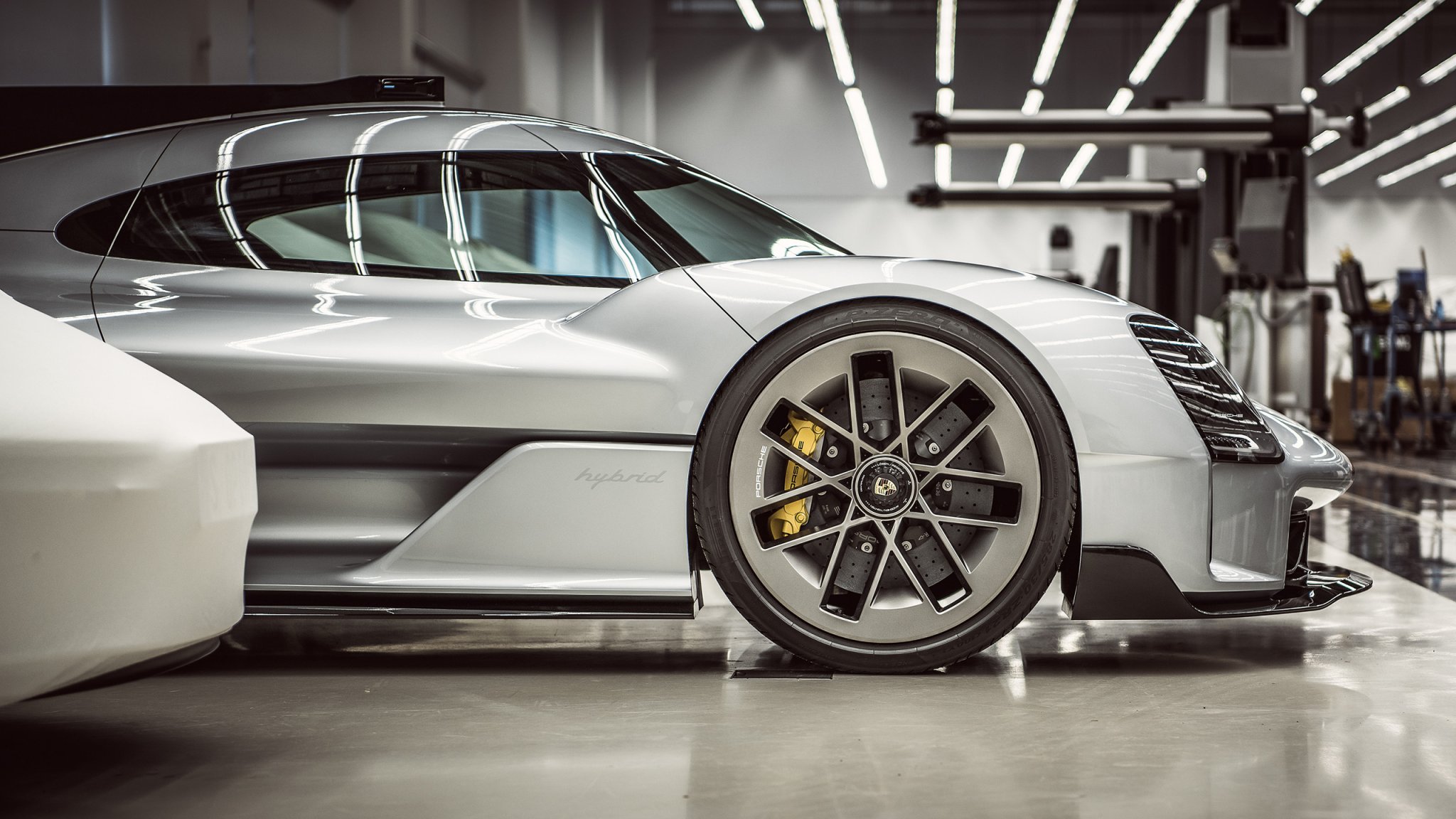

Earlier this month, McLaren unveiled the W1, the long-awaited successor to the P1. It didn’t take long for Ferrari to fire back: the F80 made its debut less than two weeks later. It doesn’t sound like Porsche is ready to step into the ring to complete the Holy Trinity for the second time, but the brand hasn’t been resting on its laurels. Porsche has experimented with a follow-up to the 918 Spyder several times over the past decade.
While we eagerly wait for Porsche to announce its next move, we’re taking a look at the hypercars that could have come out of Weissach.
Mission X (2023)

Porsche’s newest hypercar concept is also the one that’s most likely to reach production. Unveiled as part of the company’s 75th-anniversary celebration, the Mission X features an electric drivetrain, far more downforce than a 911 GT3 RS, Le Mans-style doors, and lots of carbon fiber. It looks futuristic but it’s not over the top: it doesn’t take a great deal of mental gymnastics to imagine the Mission X as a production model.
While technical specifications weren’t released, Porsche hinted that it developed the Mission X exclusively with electric power in mind. You won’t find a screaming, naturally aspirated V10 behind the cabin. Whatever powers it delivers a weight-to-power ratio of 2.2 pounds per horsepower.


Time will tell what’s next for the Mission X. Earlier in 2024, Porsche CEO Oliver Blume revealed his team will decide whether to build the model by the end of the year. That’s in a little over two months, so the clock is ticking. “The feedback we got at our 75-year celebration was massively positive, so it’s a great motivation for us to do the car,” he added. Of course, it takes more than a CEO’s nod of approval to make a car like this happen. Going electric notably adds hurdles: The technology isn’t quite ready, and demand for battery-powered hypercars isn’t exactly through the roof.
Vision 918 RS (2019)

Porsche is still investing in the 918 Spyder more than 10 years after production ended. It recently teamed up with Michelin to develop new, grippier tires for the car, and in 2019 it toyed with the idea of launching a comprehensively updated evolution named the Vision 918 RS.
Visually, there’s not much linking the 918 RS to the original 918 Spyder. The concept took the form of a coupe with a racing-inspired design that was characterized by a front splitter, a roof-mounted fin, a speed-activated rear spoiler, and a giant rear diffuser. It wouldn’t look entirely out of place festooned with sponsor decals on the starting grid of the 24 Hours of Le Mans. In contrast, the 918 Spyder featured much softer lines.


Porsche stopped short of revealing technical specifications, and those details might not matter because development supposedly ended after engineers built a 1:1 scale model of the car. Put another way, the 918 RS never materialized beyond what we see here. However, we’re told the pitch was to make a hypercar equally at home on the road as on the track, by updating the 918 Spyder’s drivetrain as well as its chassis technology. For context, the Spyder used an 887-horsepower, plug-in hybrid drivetrain composed of a naturally aspirated 4.6-liter V8 and two electric motors.
919 Street (2017)

The term “race-derived” would’ve taken on a very literal meaning had Porsche built the 919 Street it developed in 2017. Starting with the 919 Hybrid, which won the 24 Hours of Le Mans from 2015 to 2017, the brand made several visual changes but retained the prototype’s carbon fiber monocoque and 900-horsepower hybrid system. Even the dimensions stayed roughly the same; on paper, a more amateur-friendly LMP1 car was born.
There was a catch, and it wasn’t a small one: Despite its name, the 919 Street wouldn’t have been street-legal. Porsche envisioned it as a toned-down version of the 919 Hybrid aimed at so-called gentlemen drivers who find, say, a 911 GT3 Cup too tame. We’re betting the model would’ve sold out faster than it could lap the Nürburgring, but it sounds like the idea was ultimately deemed too complicated. Even something simple, like starting the engine, was jaw-droppingly complex; it took a team of trained mechanics about 45 minutes to fire up the race version.


Putting the 919 Street in the hands of speed-hungry customers might’ve very well required flying a team of mechanics to various race tracks around the globe for tech support. And while car’s production would have been strictly limited, Porsche ultimately chose to can the project.
An EV, a 918 on steroids, or a slightly softer race car; how would you shape Porsche’s next hypercar?
Got tips? Send ’em to tips@thedrive.com